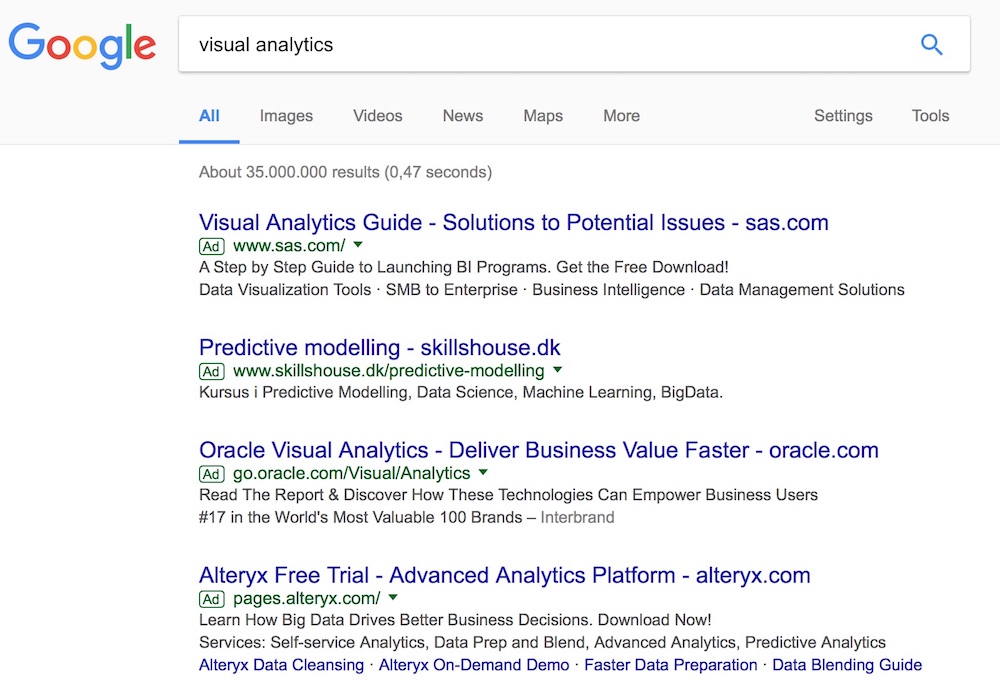Last Updated: 08 November 2017

In the last few guides, we've looked at some basic terminology, what the various channels are, and some of the more common metrics. In this guide we are going to look at some of the more advanced terminology.
Ad Servers
At the most basic level, ad servers are what allow ads to be placed ('served') on the websites that you visit. However, as you may have found from your own browsing experience, which ads are selected to be displayed on each page is far from random. These ad servers will often have quite complex algorithms determining which ads should be displayed, based on a multitude of factors, including your location and what you have been looking at recently.
When it comes to knowing what you have been looking at recently, it helps to understand how they are able to do this. Basically, when you visit a page that contains an advertisement, the Ad Server that placed the ad on that page, will also place a cookie on your computer, basically saying what page you visited and what you were looking at. The next time you visit a page with ads from the same ad server, it can read that cookie it placed earlier and show you ads that are relevant to what you were looking for.
If this does concern you, there are a couple of things you can do. The first and easiest is to use your browser in incognito mode (Ctrl + Shift + N will open a window in this mode). When your browser runs in this mode, it doesn't save cookies, your browsing history or any site data, meaning those ads will not be able to follow you around. The other manual way is to delete your browsing history and cookies. However, if you do either of these, keep in mind that you will likely have to log into all your favorite sites (Facebook, Twitter, Google, Visual Analytics etc) every time you visit the page, as most websites use cookies to confirm that you are already logged in.
AdSense
AdSense is an Ad Server run by Google and is the most popular advertising network. By integrating the AdSense JavaScript into your website page, AdSense will serve ads to your visitors, choosing what it thinks will be the best ads based on your website content, their location, and what other sites they have been visiting with AdSense on the page.
Websites that host AdSense are paid on a per-click or per-impression basis, with the amount determined by the advertisers, who bid for those clicks or impressions. Although this seems like an easy money making scheme, the payment you get for each click/impression is typically very low, and as you would expect, very few people click on these ads. Depending on your particular niche, the payment for click will typically be between $0.10 and $5, and the click through rate (the rate at which people who visit your page actually click on the ad) is typically less than 10%. For impressions, the rate is usually given per 1,000 impressions, and again is typically between $0.10 and $5.
Crunch the numbers and this means that to make even a living wage, you need to be getting at least tens of thousands of people to your website every month.
AdWords
AdWords is a service provided by Google that provides 'pay-per-click' advertising services. It is most well-known for those advertisements that show up in your Google search results. The reason you see those ads is that advertisers using AdWords have selected certain keywords that they want their product associated with. Once the keyword(s) is selected, they then make a bid for 'clicks' from people who use that keyword in a Google search. AdWords advertisements are displayed as the top few hits in your Google search results.

Searching for 'Visual Analytics' will bring up several AdWord advertisements. If you click on one of these, the company will be charged by Google for the amount they bid for that keyword. These advertisements will also change based on your location and language.
Although the search advertising shown above is the most well-known AdWords product, AdWords also provides other advertising services, including banner ads on websites, ads in Gmail and YouTube ads.
AdWords can be integrated with Google Analytics, allowing users to analyze how many people are getting to their website via AdWords advertising, and whether those people are signing up, buying or doing something else that helps generate revenue. This information then allows an assessment to be made if the advertising is cost effective.
A/B testing
Many websites will periodically undergo changes to their layout, styling, forms. The reason they do this often comes down to the bottom line - they want to improve how long visitors spend on their website, how many pages they view, how many are signing up for a membership or mailing list, and/or how many people are making purchases. When you have thousands of visitors every day, even subtle changes to font sizes, button locations, or how a form is presented can result in large differences at the end of a month. But how do you know if you are making things better or worse?
That is where A/B testing comes in. Before employing a change across a website, there will typically be a period of time when they will have both versions up and running (version A and version B). The version you see as a user will be decided randomly. With services such as Google Analytics, user behavior can then be tracked for both versions separately, and at the end of the specified period, the results can be analyzed to see if the new version improved the metrics the website is interested in such as bounce rate, pages per session, average session duration, and conversions.
Cookie
Cookies are small pieces of information (the maximum size is just over 4kb) created by websites and stored on your computer by your browser. Although there are more and more negative associations with cookies these days (not completely undeserved it must be said), the vast majority of cookies are completely harmless and in fact make your internet browsing much easier.
Website use cookies to track certain things about you, typically while you are logged in. For example - this application, when you log in, uses a cookie to hold your login authorization (provided by Google) so that you can remain logged in as you look at the different pages. It also uses it to keep track of which dates you have selected and which account/property/view you are looking at. Without the cookie recording this information, you would need to log in, select the view, and select the dates every time you visited a new dashboard or visualization.
When you log out of Visual Analytics, the cookie holding all that information is then deleted.
Remarketing
Remarketing ties into several of the concepts we talked about earlier. At the most basic level, remarketing is marketing to people who have already visited your website and/or viewed a product you are selling. It is based on the idea that people are unlikely to make a purchase the first time they see a particular item, whether it be because they are researching alternative products, looking for a cheaper place to make the purchase, or just want more time to think about it. By marketing to people who have already viewed the product, websites are focussing on people who they know have some interest in that product, and are attempting to capitalize on those people who, after doing their research and considering their purchase, are ready to make a purchase.
The success of remarketing strategies is the primary reason ads follow you around on the internet. Once you have looked at a product, the website you looked at will often be using some form of Ad Server that will allow them to then place ads for that product on pages you visit afterwards.
Tag Management System
To understand what a Tag Management System is, we first need to understand what a tag is in this context.
Many websites utilize 3rd party solutions to add certain functions to their websites. This is often done by adding a small snippet of JavaScript to the page. Google Analytics is an example of this - in order for you to be able to track who is visiting your website (the 'function'), you add the Google Analytics tracking code (a 'tag'). For larger websites, there can be a lot of the tags that they need to add, covering everything from campaign management, A/B Testing, ad servers, and many more. Because there are potentially many of these snippets, and they all need to be added to multiple pages, keeping all these snippets consistent and up-to-date can start to consume significant amounts of time.
This is where tag management systems come in. Tag management systems allow you to add, edit or remove tags from across all the pages in your website, reducing the time that has be spent manually adjusting tags, and reducing the number of errors and inconsistencies. Good tag management systems also allow you to create rules so that certain tags are only added to certain pages, or for certain users, allowing for a whole new level or customization.
UTM Tracking
UTM (Urchin Tracking Module) tracking is a method of adding URL parameters to the links that you share to more accurately track where your users are coming from. These parameters allow you to specify the source, medium, campaign and other details for the post that someone used to get to your website. For example, say I promoted a post on Facebook to get new readers to my blog, and that this specific post offered users a discount on an annual subscription to my premium content (you know, because I'm basically the New York Times). If I just include my standard URL (http://www.example.com/) in the Facebook post, when I look at my Google Analytics data, there will be no way for me to know which users got to my website because they clicked specifically on that post, and how many came from other Facebook posts I have posted before or since.
Instead, I can use Google's Campaign URL Builder to add UTM tracking to the URL, then share that link in the Facebook post instead. Now when I look at Google Analytics, I can see exactly how many users came to my website from that post specifically. As an example, in the scenario outlined above, the discounted subscription post might use a URL that looks something like this:
http://www.example.com/?utm_source=facebook.com&utm_medium=social&utm_campaign=Subscription%20Discount